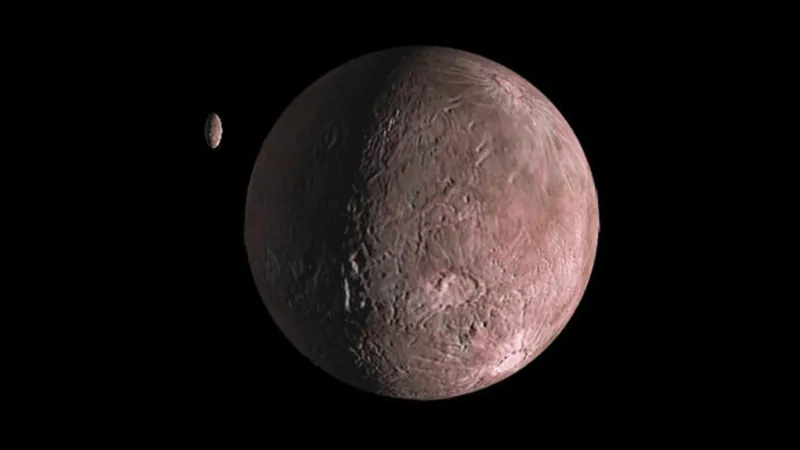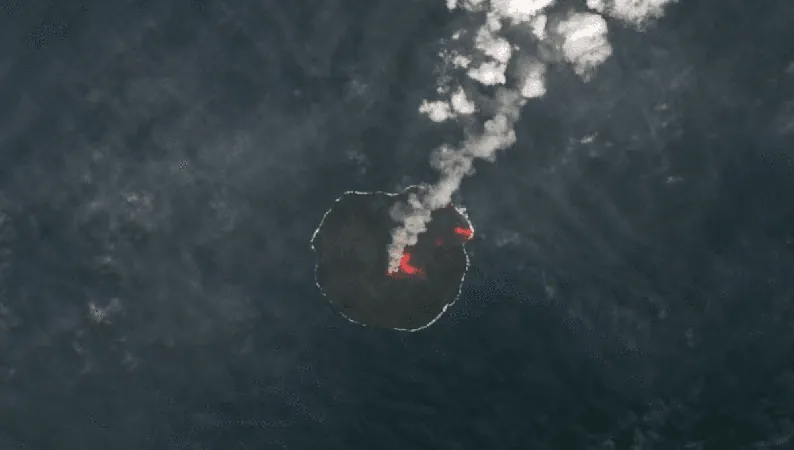
Quaoar: The Mysterious Dwarf Planet That Might Have a New Moon!
2025-09-10
Author: Kai
A Stunning Discovery on the Distant Dwarf Planet
Astronomers have made an exciting find: the enigmatic dwarf planet Quaoar may have a brand-new moon! Recent observations suggest that this celestial body could possess either a second satellite or a third ring, further deepening the mysteries of our solar system.
How Observations Come to Life
Dwarf planets like Quaoar exist far beyond Pluto, making direct observation a challenge. Unlike Ceres, which resides in the main asteroid belt between Mars and Jupiter, Quaoar requires a more sophisticated method known as stellar occultation. This process involves watching as the dwarf planet passes in front of a distant star, momentarily blocking its light—and potentially revealing rings or moons.
The Critical Observation Event
On June 25, 2025, astronomer Rick Nolthenius and his former student, Kirk Bender, geared up for a stellar event from California's Monterey Institute for Research in Astronomy. The dwarf planet, measuring around 680 miles wide, was set to create an occultation visible only to select areas in the Arctic. They were ready, with their telescopes poised to capture what might unfold.
A Moment to Remember!
As anticipation built, Nolthenius decided to start recording early. His instincts paid off when he exclaimed, "Oh my God, did you see that? The star disappeared!" Their recordings revealed a fleeting 1.23-second blip, pointing towards the existence of a potential new moon orbiting Quaoar.
Delving into Quaoar’s History
Discovered in 2002, Quaoar orbits the sun every 286 years. Named after a creation deity from Tongva mythology, this dwarf planet continues to intrigue scientists. Its only confirmed moon, Weywot, was discovered in 2007, and the properties of Quaoar’s rings challenge existing theories about planetary rings in our solar system.
The Moon or Ring Conundrum
While Nolthenius and Bender are inclined to believe they’ve found a new moon, they remain cautious. It’s possible that what they observed was a third ring. After extensive observations following the initial occultation, no further blips were detected, leaving both possibilities open.
Ruling Out Other Interferences
The team had to dismiss several potential disruptions during their observations. Despite the presence of aircraft and other possible offenders, nothing interfered with the readings. Even the known moon Weywot cast its shadow outside their observation range.
What’s Next for Quaoar?
If confirmed, this new moon is estimated to be at least 19 miles wide, orbiting in resonance with Quaoar’s outermost ring. Full validation will require more observations, posing a challenge as the optimal viewing conditions might come few and far between.
A Call to the Astronomical Community
Nolthenius encourages both professional and amateur astronomers to keep an eye on Quaoar. With its current trajectory crossing paths with a star-rich area of the sky, the opportunity for future occultations may diminish for the next two centuries.
Potential Naming Rights!
Should this newfound moon be officially recognized, Nolthenius is eager to propose a name—potentially honoring someone close to him. However, he’s aware of the International Astronomical Union's naming conventions, which often favor mythological figures.
The Adventure Continues!
Both Nolthenius and Bender are committed to exploring more occultations, aiming to observe over a hundred this year. For them, it's not just science; it's an adventure into the mysteries of the cosmos. "I get to go off and do some science and not think about anything else," Nolthenius states, encapsulating the thrill of astronomical exploration.



 Brasil (PT)
Brasil (PT)
 Canada (EN)
Canada (EN)
 Chile (ES)
Chile (ES)
 Česko (CS)
Česko (CS)
 대한민국 (KO)
대한민국 (KO)
 España (ES)
España (ES)
 France (FR)
France (FR)
 Hong Kong (EN)
Hong Kong (EN)
 Italia (IT)
Italia (IT)
 日本 (JA)
日本 (JA)
 Magyarország (HU)
Magyarország (HU)
 Norge (NO)
Norge (NO)
 Polska (PL)
Polska (PL)
 Schweiz (DE)
Schweiz (DE)
 Singapore (EN)
Singapore (EN)
 Sverige (SV)
Sverige (SV)
 Suomi (FI)
Suomi (FI)
 Türkiye (TR)
Türkiye (TR)
 الإمارات العربية المتحدة (AR)
الإمارات العربية المتحدة (AR)